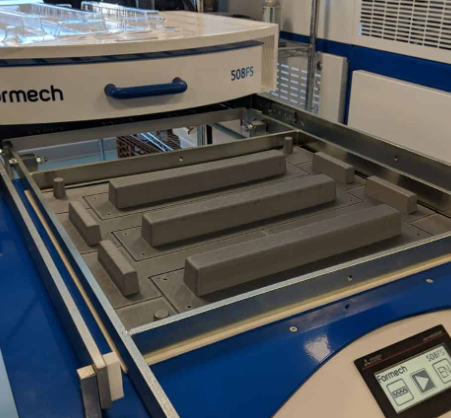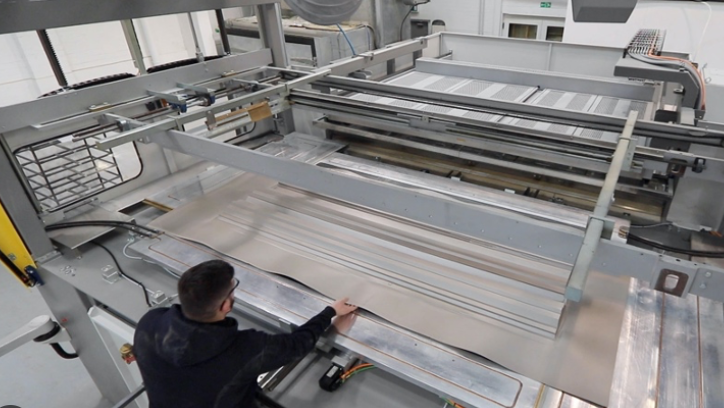Vacuum forming uses a vacuum to shape heated plastic sheets, whereas thermoforming utilizes both heat and pressure for molding.
Overview of Vacuum Forming and Thermoforming
Vacuum forming and thermoforming are two prominent methods used in the plastic manufacturing industry. Each technique offers unique benefits and is suitable for different applications. Understanding the fundamental principles, applications, and differences between these methods is crucial for manufacturers and designers in selecting the right process for their specific needs.

Basic Principles of Vacuum Forming
Vacuum forming is a simplified version of thermoforming. In this process, a plastic sheet is heated to a pliable forming temperature. The heated sheet then stretches onto a single-surface mold. A vacuum is applied to suck the sheet into the mold, ensuring it takes the desired shape. This method is widely used for packaging, product casings, and various other applications where intricate detailing is less critical.
Key aspects of vacuum forming include:
- Heating: The plastic sheet is heated evenly to become flexible.
- Molding: The sheet is placed over the mold, and a vacuum removes the air between the sheet and the mold.
- Cooling and Release: After the plastic has formed to the mold, it is cooled to solidify its shape.
Basic Principles of Thermoforming
Thermoforming, on the other hand, involves heating a plastic sheet until it becomes pliable and then molding it to a specific shape using a mold and applying pressure. This method can be used for creating more complex shapes compared to vacuum forming and is ideal for high-detail applications.
Critical steps in thermoforming include:
- Heating: Similar to vacuum forming, the sheet is heated uniformly.
- Molding: The heated sheet is placed over a mold. Both pressure and vacuum may be used to form the sheet into the mold.
- Cooling and Release: The material is cooled to harden and maintain its new shape.
Comparative Analysis of Processes in Vacuum Forming and Thermoforming
Vacuum forming and thermoforming are two popular processes in the plastics industry, each with unique characteristics in terms of material preparation, heating, molding, cooling, and release mechanisms. This analysis delves into the specifics of these processes, providing a detailed comparison to help in choosing the appropriate method for different manufacturing requirements.
Material Preparation and Heating
In both vacuum forming and thermoforming, the initial step involves preparing and heating the plastic material. However, the approaches vary slightly.
- Vacuum Forming: Typically uses thinner plastic sheets, with thicknesses ranging from 0.5 mm to 6 mm. The heating process needs to bring the material to a pliable state without overheating, usually requiring less energy. The average heating time can vary from 30 seconds to 3 minutes, depending on the material’s thickness and type.
- Thermoforming: Employs both thin and thick sheets, going up to 12 mm. This process might require more energy for heating due to the potential thickness of the material. The heating time is generally longer, sometimes exceeding 5 minutes for thicker sheets.
Molding Techniques in Vacuum Forming vs. Thermoforming
The molding techniques in these two processes highlight their primary differences and applications.
- Vacuum Forming Molding: Relies on a vacuum to draw the heated sheet into the mold. This method is less suited for intricate details but excels in simpler applications. The process is generally faster, making it more cost-effective for larger production runs.
- Thermoforming Molding: Uses a combination of pressure and vacuum to form the sheet over the mold. This approach allows for greater detail and is better suited for complex shapes. However, the increased complexity can lead to higher production costs and slower speeds.
Cooling and Release Mechanisms
After the molding stage, cooling and releasing the formed plastic are critical to maintaining its shape and quality.
Vacuum Forming Cooling and Release: Typically, vacuum-formed items cool faster due to the thinner material used. The release mechanism is straightforward, often taking seconds to complete.
Thermoforming Cooling and Release: Thicker materials used in thermoforming take longer to cool. The release process can be more intricate, especially for complex shapes, potentially increasing the cycle time.
Material Compatibility and Applications
Understanding the types of materials compatible with vacuum forming and thermoforming, along with their typical applications across various industries, is crucial. This knowledge not only influences the manufacturing process but also affects the final product’s functionality, quality, and cost.
Types of Materials Used in Each Process
The selection of materials for either vacuum forming or thermoforming depends largely on the desired properties of the final product, such as durability, clarity, chemical resistance, and flexibility.
- Materials in Vacuum Forming: Commonly used materials include Acrylonitrile Butadiene Styrene (ABS), Polystyrene (PS), Polyethylene Terephthalate (PET), and Polyvinyl Chloride (PVC). ABS, known for its toughness and impact resistance, is a popular choice for automotive parts and equipment housings. PET, with its clarity and food safety, is frequently used for packaging applications.
- Materials in Thermoforming: This process also utilizes materials like ABS, PS, and PVC, but can handle a broader range, including Polyethylene (PE), Polypropylene (PP), and Polycarbonate (PC). PC is favored for its strength and transparency, making it ideal for protective gear and medical devices. PP, known for its fatigue resistance, is commonly used in automotive and consumer product applications.
Typical Applications in Various Industries
The versatility of both vacuum forming and thermoforming allows for their application in a wide range of industries.
- Applications of Vacuum Forming: This method is widely employed in packaging, including blister packs and clamshells. It’s also popular in the automotive industry for non-critical parts like dashboards and door panels. Signage and display units also benefit from vacuum forming due to its cost-effectiveness and ease of production.
- Applications of Thermoforming: Thermoforming finds its use in more demanding applications. Medical device packaging, which requires precision and sterility, often utilizes thermoformed plastics. In the automotive sector, it’s used for more complex and durable components. Consumer products, like refrigerator liners and food containers, are also commonly produced through thermoforming.
Efficiency and Cost Implications
Understanding the efficiency and cost implications of vacuum forming and thermoforming is vital for businesses to make informed decisions. This comparison delves into production efficiency and cost considerations between the two processes.
Analysis of Production Efficiency
| Factor | Vacuum Forming | Thermoforming |
|---|---|---|
| Cycle Time | Generally faster due to simpler setup and quicker heating and cooling times. Typical cycle times can range from 2 to 5 minutes. | Slower, especially for thicker materials. Cycle times can vary from 5 to 15 minutes. |
| Energy Consumption | Lower energy consumption due to the heating of thinner materials and shorter cycle times. | Higher energy consumption, particularly for heating thicker materials and longer cycle times. |
| Material Utilization | More material waste due to the nature of the process. Trim and excess material are common. | Better material utilization, especially in high-precision molds, leading to less waste. |
| Labor Requirements | Less labor-intensive due to simpler machinery and processes. | More labor-intensive, often requiring skilled operators for complex molds and machinery. |
Cost Comparison Between Vacuum Forming and Thermoforming
| Factor | Vacuum Forming | Thermoforming |
|---|---|---|
| Tooling Costs | Lower. Molds are typically less expensive due to simpler designs. | Higher. Molds are more complex and require more precision, increasing costs. |
| Material Costs | Generally lower, as it uses thinner sheets and less expensive materials. | Higher, especially when using thicker and more advanced materials. |
| Production Costs | Lower production costs due to faster cycle times and less energy consumption. | Higher production costs due to longer cycle times, higher energy consumption, and labor costs. |
| Quality | Suitable for lower-detail applications, affecting the cost-benefit for high-detail products. | Higher-quality finish suitable for detailed and complex products, justifying the higher cost. |
Quality and Precision Aspects
The quality and precision of final products in vacuum forming and thermoforming are crucial factors that significantly influence their suitability for various applications. These aspects determine the functionality and aesthetic appeal of the products.

Quality of Final Products in Each Method
In vacuum forming, the quality of the final product is generally suitable for less detailed applications. The method excels in producing large parts with moderate detail and finish. The surface quality of vacuum-formed products is generally good, but it may not achieve the high-level finish often required for consumer-facing products. This method is more about efficiency and cost-effectiveness, making it ideal for industrial components and packaging solutions.
Thermoforming, however, offers a higher quality finish, suitable for products that require a more refined appearance. This process can achieve fine details, sharp corners, and complex shapes, which are often essential in consumer products, medical devices, and other high-end applications. The advanced controls in thermoforming allow for consistent quality across large production runs, ensuring that each piece meets strict standards.
Precision and Tolerance Levels in Vacuum Forming vs. Thermoforming
When it comes to precision and tolerance levels, thermoforming has a significant edge over vacuum forming. Thermoforming can maintain tighter tolerances, often within 0.5 mm, making it suitable for applications where precision is critical. The use of sophisticated molds and controlled processes allows for this high level of precision, ensuring that even the most intricate details are accurately replicated.




